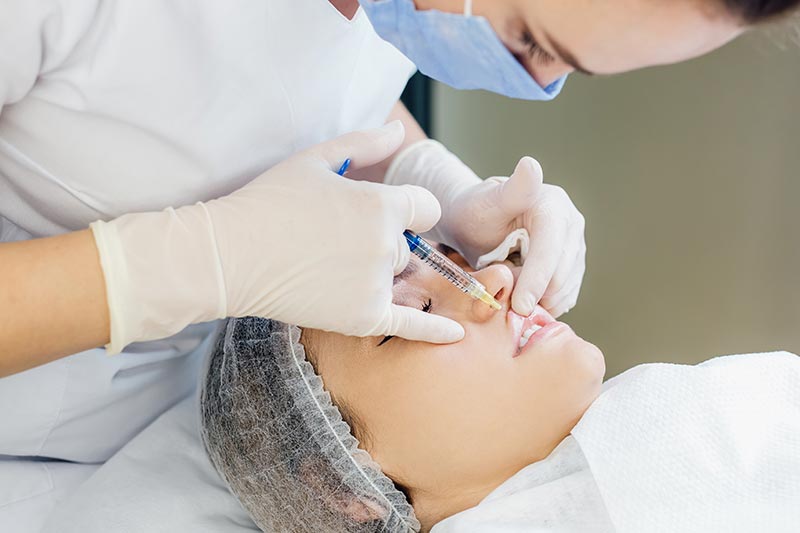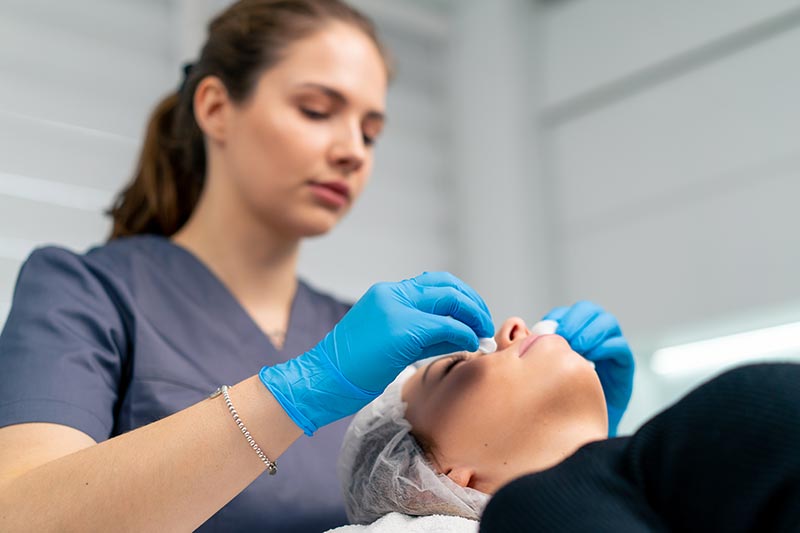Dental Benefits of Botox
When most people hear “Botox,” their minds typically turn to cosmetic treatments—a solution for smoothing wrinkles and achieving a more youthful appearance. This common perception, while accurate, only tells half the story. In the forward-thinking world of modern dentistry, Botulinum Toxin has emerged as a powerful therapeutic agent, offering life-changing solutions for complex medical and dental issues.
For adults and seniors grappling with chronic pain, destructive habits, and functional challenges, this treatment represents a significant advancement in care. At practices like Superior Dental of Omaha, this modern approach is used to address the root causes of orofacial problems, providing relief where other methods have fallen short.
Understanding the significant dental benefits of Botox requires a shift in perspective, viewing it not as a cosmetic enhancer but as a precise medical tool. Dentists, with their in-depth knowledge of facial anatomy, nerves, and muscles, are uniquely qualified to administer this treatment for therapeutic purposes. It is this expertise that transforms Botox from a simple aesthetic procedure into a sophisticated solution for improving health and quality of life.
Understanding the Science Behind Botox’s Dental Benefits
To appreciate its applications in dentistry, it is crucial to understand how Botox works on a muscular level. Botox is not a filler; it does not add volume. It is a highly purified protein that acts as a neuromodulator. When administered in small, targeted doses, it works by interrupting the nerve signals that command a specific muscle to contract. The result is a temporary and localized relaxation of that muscle.
This intervention is not about causing paralysis; it is about reducing hyperactivity. Think of it less as an “off” switch and more as a “dimmer” switch for overactive muscles. This allows for the moderation of involuntary, forceful contractions while leaving normal, voluntary functions, like chewing, speaking, and expressing emotions, entirely intact. This precise control is the foundation for the many therapeutic benefits Botox offers in a dental setting.
A Breakthrough in Alleviating Pain: Botox Benefits for TMD and Jaw Pain

One of the most impactful applications of Botox in dentistry is in the treatment of Temporomandibular Disorders (TMD). These disorders affect the temporomandibular joint (TMJ), a complex hinge that connects your jaw to your skull. When this joint and the surrounding muscles become overworked and inflamed, it can cause a range of debilitating symptoms, including chronic jaw pain, severe headaches or migraines, earaches, and difficulty chewing.
Often, TMD is a muscular issue at its core. The powerful masseter muscles at the angle of the jaw and the temporalis muscles at the temples can become tense and hypertrophic (enlarged) from constant, subconscious clenching. This places immense strain on the jaw joint. While traditional treatments, like nightguards, can help protect the teeth, they don’t stop the painful muscle contractions.
By injecting Botox directly into these overactive muscles, a dentist can break the cycle of tension and pain, allowing the inflamed joint to rest and heal. For patients who have suffered for years, this relief can be profound.
[Related: What is Restorative Dentistry?]
Preserving Your Smile: The Protective Dental Benefits of Botox for Bruxism
Bruxism, the involuntary grinding and clenching of teeth, is an incredibly destructive condition that most often occurs during sleep. The forces exerted during these episodes can be far greater than those used in conscious chewing, leading to devastating long-term effects. These include severely worn-down or flattened teeth, fractures in teeth and dental fillings, increased tooth sensitivity, and chronic jaw muscle soreness.
A custom-fitted nightguard is an essential tool for protecting teeth from physical damage. However, Botox offers an invaluable complementary therapy by addressing the source of the force. By weakening the powerful contractions of the clenching muscles, Botox reduces the sheer intensity of the grinding habit.
At Superior Dental of Omaha, we find this dual approach can be the key to managing severe cases. This proactive treatment doesn’t just shield your teeth; it neutralizes the destructive force, helping to preserve your natural smile and dental restorations for years to come.
Enhancing Function and Aesthetics: More Surprising Dental Benefits of Botox
Beyond pain management and dental protection, Botox offers targeted solutions that improve both function and smile aesthetics, proving its versatility in a comprehensive dental care plan.
For senior adults, adapting to new dentures can sometimes be a frustrating process. Overactive muscles around the mouth can push against a new prosthesis, causing it to feel unstable, shift during speech, or become dislodged while eating. A few small, strategic Botox injections can relax these specific muscles, allowing the denture to seat comfortably and securely. For new denture wearers, this simple application can dramatically improve comfort, confidence, and overall quality of life.
On the aesthetic front, Botox provides a minimally invasive solution for a “gummy smile,” a condition where an excessive amount of gum tissue is exposed when smiling. This is often caused by a hyperactive muscle that lifts the upper lip too high. Rather than resorting to surgery, a dentist can use Botox to relax this muscle, allowing the lip to rest in a more natural position and creating a more harmonious smile.
[Related: Gum Disease Symptoms and Treatments]
A New Standard of Care: Embracing the Dental Benefits of Botox

Botox has firmly established its place in modern dentistry as a safe, effective, and versatile therapeutic tool. Its ability to provide targeted muscle relaxation offers solutions for painful, destructive, and functionally challenging conditions that were once difficult to manage. From pain relief for those with TMD to protecting teeth from the forces of bruxism and improving the comfort of dental prosthetics, its applications continue to grow.
The key is seeking treatment from a qualified healthcare professional who has extensive training in both facial anatomy and the administration of Botox for therapeutic purposes. Ultimately, Botox in a dental setting is about restoring balance, relieving pain, and improving function, representing a true advancement in patient care. If you are struggling with any of these conditions and are looking for a modern, effective solution, exploring the dental benefits of Botox may be your next step.
For those in the Omaha area, the experienced team at Superior Dental of Omaha is ready to provide a comprehensive consultation to determine if this revolutionary treatment is right for you.
